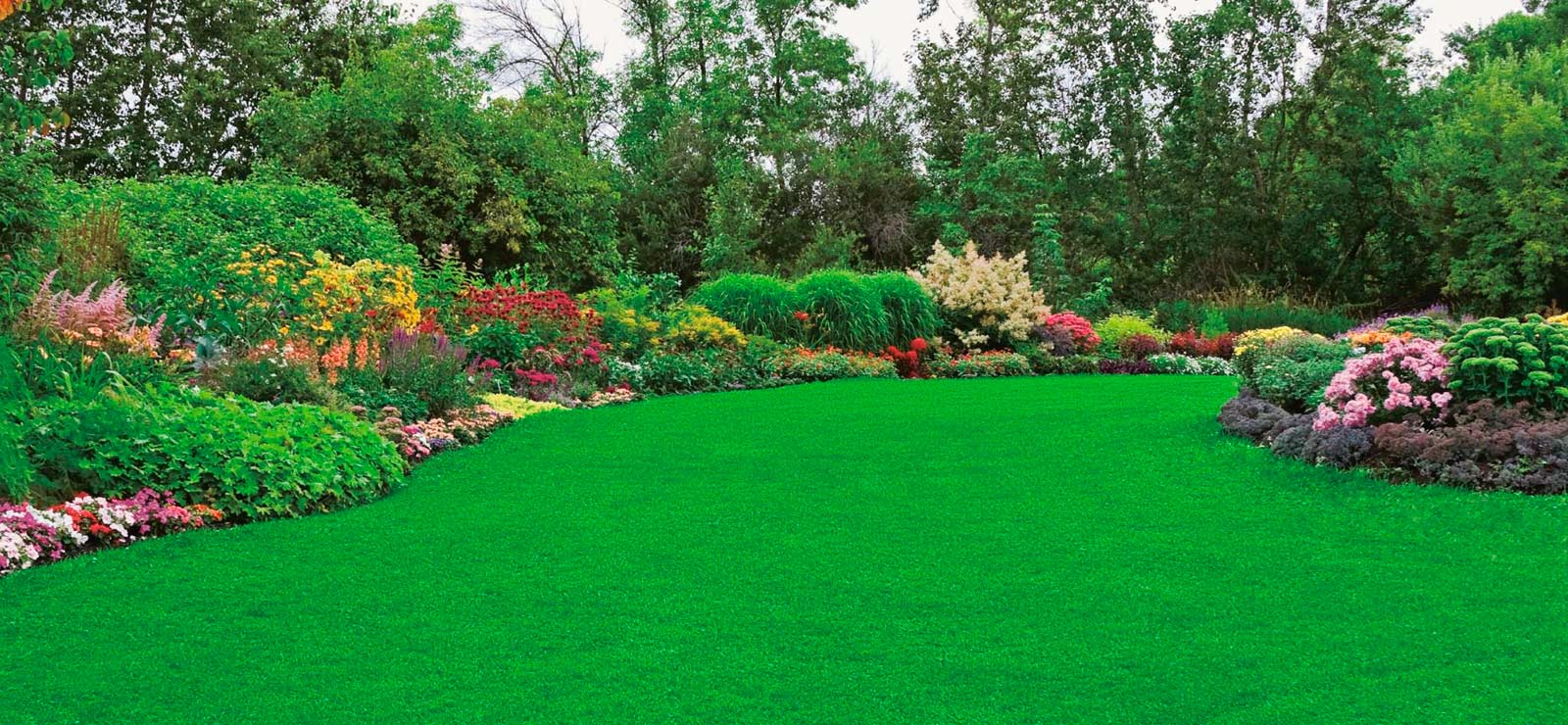
Application Instructions
Estate Weed and Feed
Estate Weed and Feed is a contact killer that kills active weeds and protects against future weed problems while promoting healthy lawn growth.
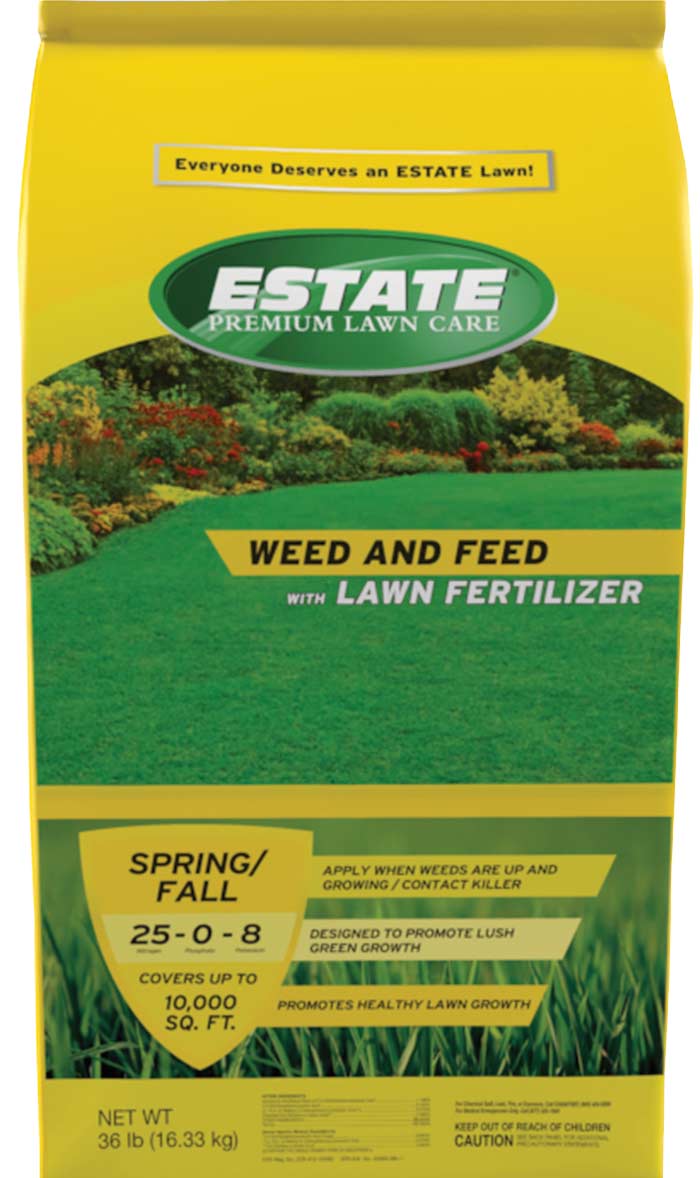
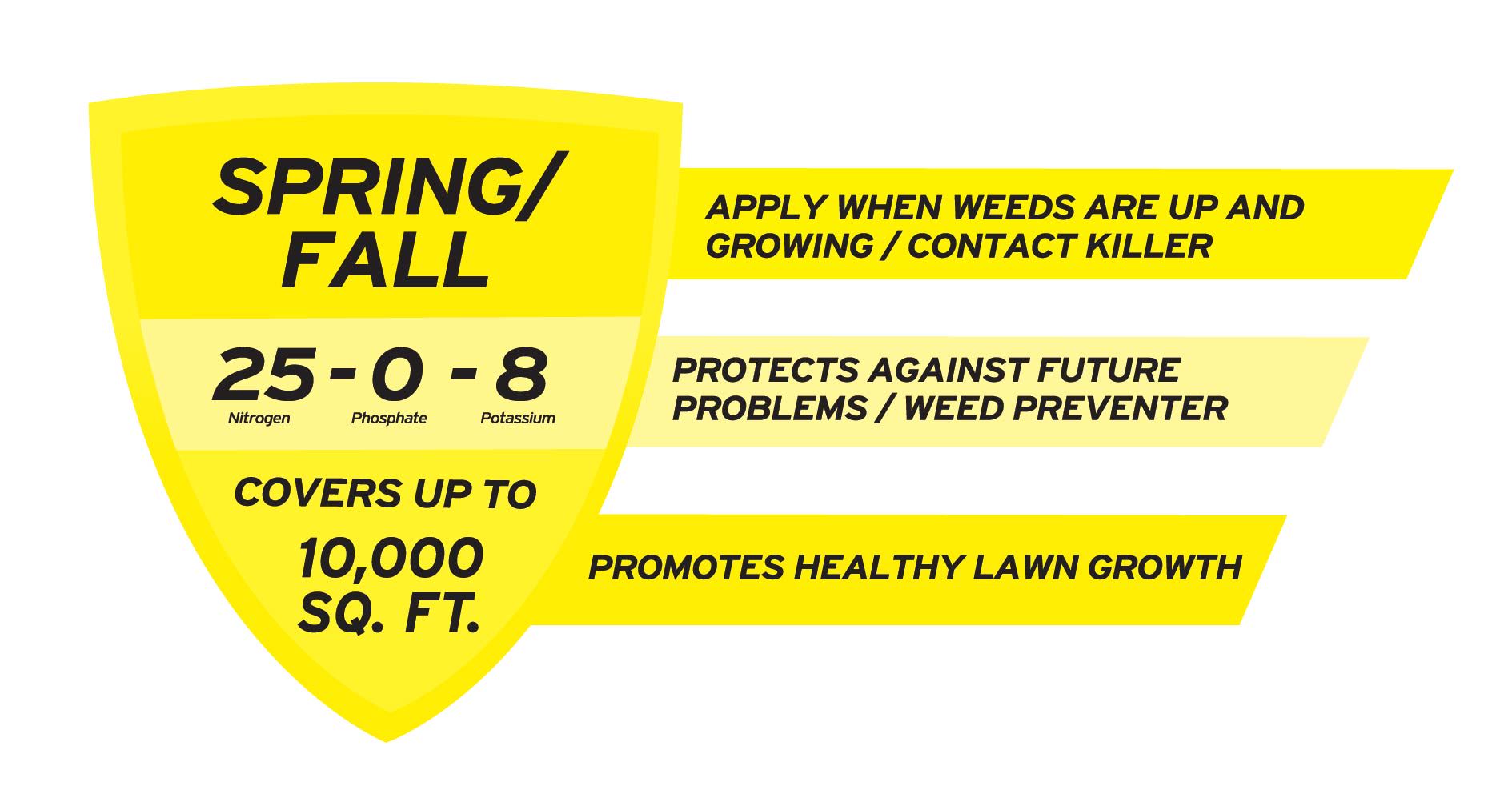
Estate Weed and Feed Directions for Use
Do not apply this product in a way that will come in contact with any person or pet, either directly or through drift. Keep people and pets out of the area during application. Do not allow people or pets to enter the treated area until dusts have settled. Do not apply directly to or near water, storm drains, gutters, sewers, or drainage ditches. Do not apply within 25 feet of rivers, fish ponds, lakes, streams, reservoirs, marshes, estuaries, bays, and oceans. Do not apply when windy. Apply this product directly to your lawn and sweep any product landing on the driveway, sidewalk, gutter, or street back onto the treated area. To prevent product run-off, do not over water the treated area(s) to the point of runoff or apply when raining or when rain is expected that day. Do not apply more than 2 applications per year, including broadcast applications in combination with spot treatments. This product is a stable mixture of four herbicides. It is for use on residential turf. This product may be used on Bahia, common Bermuda, Blue Grass, Centipede, Fescue, Rye, St. Augustine, and Zoysia grass. DO NOT USE on Dichondra and Carpet grass. DO NOT USE this product where desirable clovers are present or allow the product to “wind drift” onto flowers, vegetables, ornamentals, shrubs, trees or other desirable plants.
Prevents
This product is designed to promote lush green growth in lawns and control many broadleaf weeds such as:
Alder, Annual yellow, sweet clover, Artichoke, Aster, Austrian fieldcress, Bedstraw, Beggartick, Bidne, Bindweed, Bird vetch, Bitterweed, Bitter wintercress, Black-eyed Susan, Black medic, Black mustard, Black-seed plantain, Blessed thistle, Blue lettuce, Blue vervain, Box elder, Bracted plantain, Brassbuttons, Bristly oxtongue, Broadleaf dock, Broadleaf plantain, Broomweed, Buckhorn, Buckhorn plantain, Bulbous buttercup, Bull nettle, Bull thistle, Burdock, Burning nettle, Bur ragweed, Burweed, Buttercup, Canada thistle, Carolina geranium, Carpetweed, Catchweed bedstraw, Catsear, Catnip, Chickweed, Chicory, Cinquefoil, Clover, Cockle, Cocklebur, Coffeebean, Coffeeweed, Common chickweed, Common mullein, Common sowthistle, Corn Chamomile, Creeping jenny, Crimson clover, Croton, Cudweed, Curly dock, Curly indigo, Dandelion, Dead nettle, Dock, Dogbane, Dogfennel, Elderberry, English daisy, Fall dandelion, False dandelion, False flax, False sunflower, Fiddleneck, Field bindweed, Field pansy, Flea bane (daisy), Flixweed, Florida betony, Florida pusley, Frenchweed, Galinsoga, Garlic mustard, Goathead, Goatsbeard, Goldenrod, Ground ivy, Gumweed, Hairy bittercress, Hairy fleabane, Hawkweed, Healall, Heartleaf drymary, Hedge bindweed, Hedge mustard, Hemp, Henbit, Hoary cress, Hoary plantain, Hoary vervain, Honeysuckle, Hop clover, Horsenettle, Horsetail, Indiana mallow, Ironweed, Jewelweed, Jimsonweed, Kochia, Knawel, Knotweed, Lambsquarter, Lespedeza, Locoweed, Lupine, Mallow, Marshelder, Matchweed, Mexicanweed, Milk vetch, Milkweed bloodflower, Mugwort, Morningglory, Mousear chickweed, Musk thistle, Mustard, Narrowleaf plantain, Narrowleaf vetch, Nettle, Nutgrass, Orange hawkweed, Oxalis, Oxeye daisy, Parsley-piert, Parsnip, Pearlwort, Pennycress, Pennywort, Peppergrass, Pepperweed, Pigweed, Pineywoods bedstraw, Plains coreopsis, Plantain, Poison hemlock, Poison ivy, Poison oak, Pokeweed, Poorjoe, Povertyweed, Prickly lettuce, Prickly sida, Primrose, Prostrate knotweed, Prostrate pigweed, Prostrate spurge, Prostrate vervain, Puncture vine, Purslane, Ragweed, Red clover, Redroot pigweed, Red sorrel, Redstem filaree, Rough cinquefoil, Rough fleabane, Roundleafed marigold, Rush, Russian pigweed, Russian thistle, St. Johnswort, Scarlet pimpernel, Scotch thistle, Sheep sorrel, Shepherdspurse, Slender plantain, Smallflower galinsoga, Smartweed, Smooth dock, Smooth pigweed, Sneezeweed, Southern wild rose, Sowthistle, Spanishneedle, Spatterdock, Speedwell, Spiny amaranth, Spiny cocklebur, Spotted catsear, Spotted knapweed, Spotted spurge, Spurge, Spurweed, Stinging nettle, Stinkweed, Stitchwort, Strawberry clover, Sumac, Sunflower, Sweet clover, Tall nettle, Tall vervain, Tansy mustard, Tansy ragwort, Tanweed, Tarweed, Thistle, Tick trefoil, Toadflax, Trailing crownvetch, Tumble mestard, Tumble pigweed, Tumbleweed, Velvet leaf, Venice mallow, Veronica, Vervain, Vetch, Virginia buttonweed, Virginia creeper, Virginia pepperweed, Wavyleaf bullthistle, Western clematis, Western salsify, White clover, White mustard, Wild mustard, Wild aster, Wild buckwheat, Wild carrot, Wild four-o’-clock, Wild garlic, Wild geranium, Wild lettuce, Wild marigold, Wild onion, Wild parsnip, Wild radish, Wild rape, Wild strawberry, Wild sweet potato, Wild vetch, Willow, Witchweed, Wooly morningglory, Woodsorrel, Wooly croton, Wooly plantain, Wormseed, Yarrow, Yellow rocket, Yellowflower, and pepperweed.
When to Apply
Best results are obtained when weeds are growing actively in spring or early fall. Avoid contact with desirable shrubs, plants, vegetables, or flowers, especially when applying with a rotor (spinner) type spreader. Do not reseed for at least 3 to 4 weeks after application. Do not apply to newly seeded or sodded lawn until after 3 mowings.
For Optimum Results:
- Avoid mowing 1 to 2 days before and after application
- Apply when grass is moist (after a rain sprinkling or dew)
- Avoid unnecessary disturbances, including watering of treated areas for 48 hours after application. Watering will wash off weed killing material
- Avoid applying if rainfall is expected within 48 hours following treatment. Possible retreatment in approximately 30 days may be necessary if lawn is heavily overrun with weeds or if adverse low moisture conditions prevail and weeds are in a state of poor growth. Do not exceed recommended rates because damage to turf may occur.
NOTE:
When applying to Southern Grasses - under conditions of inadequate moisture, high temperature and high humidity, over-application may cause minor transitory discoloration on Centipede and St. Augustine grasses. It is recommended that during hot, dry conditions, application rates should be reduced 50% to avoid possible dehydration or browning of grass.
How to Apply
Apply evenly with a lawn spreader as a one pass application. A two-pass application, criss-crossing the area at half the rate each time is equal to one application. The following settings are approximate for applying contents of this package at a suggested rate of 3.6 pounds per 1,000 square feet. Settings are based on an average walking speed. Reduce setting for slower speed; raise setting for higher speed. Check your spreader on 250 square feet and adjust to apply at the rate of 0.9 pound per 250 square feet.
Spreader Settings
This product may be applied with drop or rotary-type spreaders designed to apply granular herbicides. Settings shown in the table are approximate for new equipment. Calibrate the spreader according to the manufacturer’s directions. Initial spreader settings may require adjustment to deliver the recommended application rate under actual application conditions. The desired calibration setting may be marked or recorded for future reference.
Spreader Settings Table
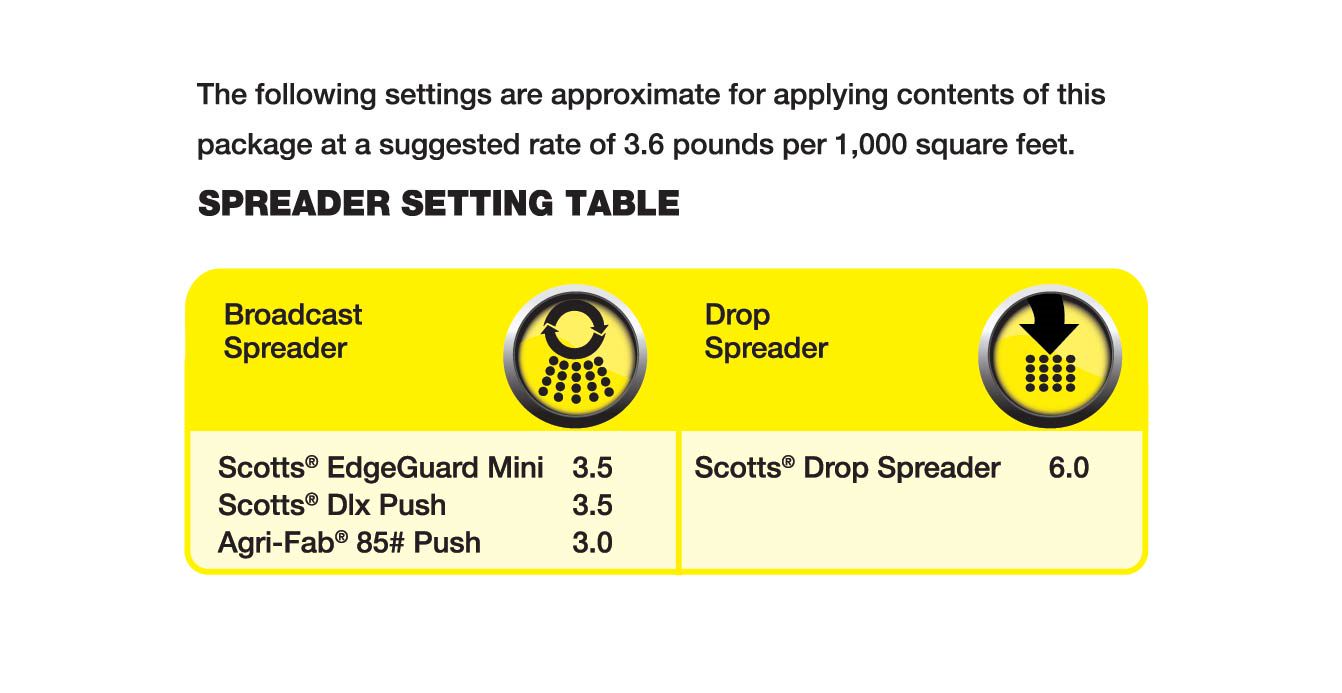
Coverage Area
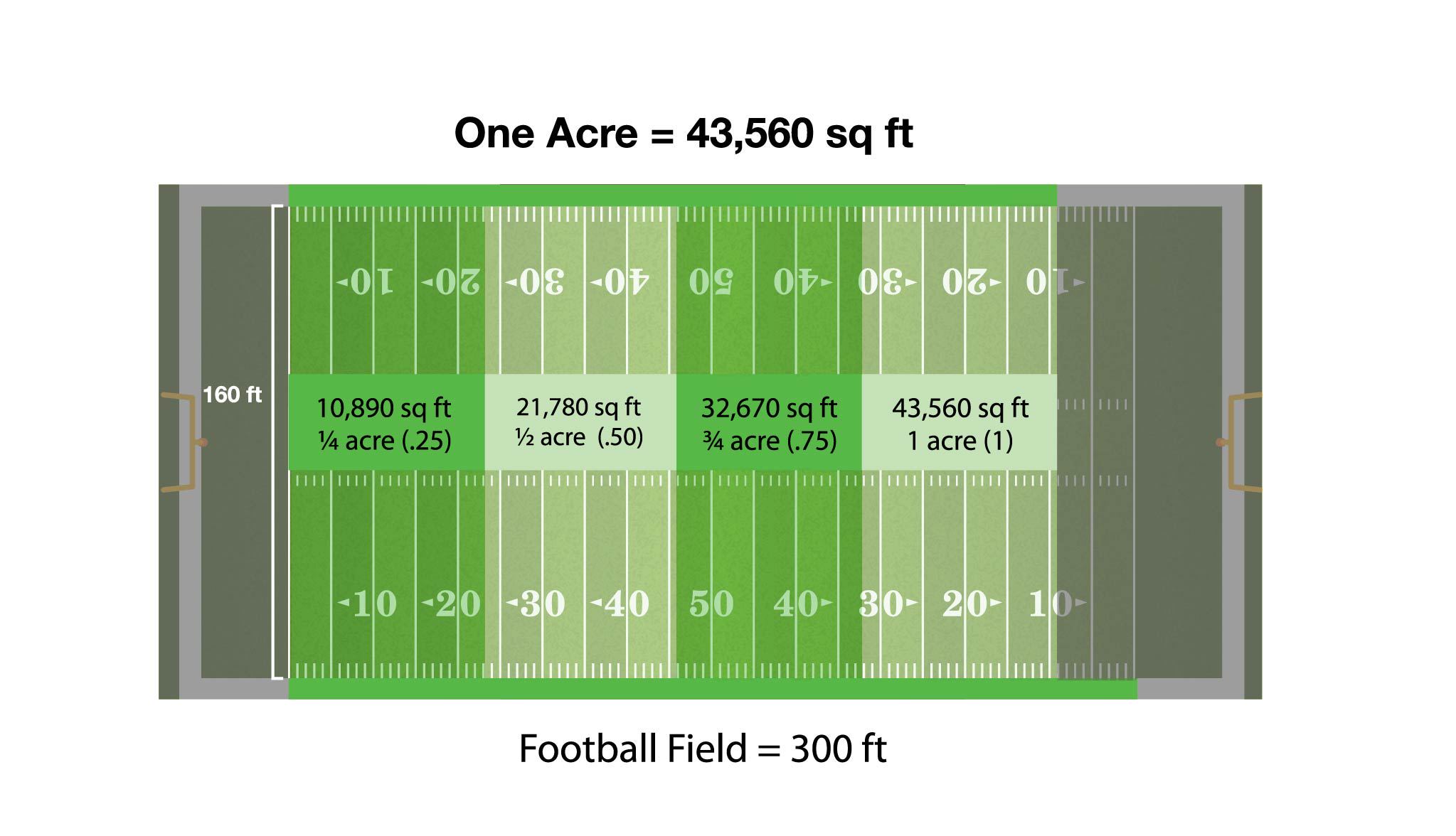
Additional Details

Tips for Good Lawns
- Read instructions before using.
- Use sharp blades, with mowers properly adjusted.
- Walk at a steady normal speed when spreading.
- Always shut off spreaders when turning or stopping.
- Do not fill spreaders when on the grass.
- Clean spreaders thoroughly after use.
- Spreader opening and closing mechanism should be working freely before starting.
- Be sure not to skip or miss areas.
- Be sure not to overlap areas.
- It is better to water deep when necessary, than it is to sprinkle lightly often.